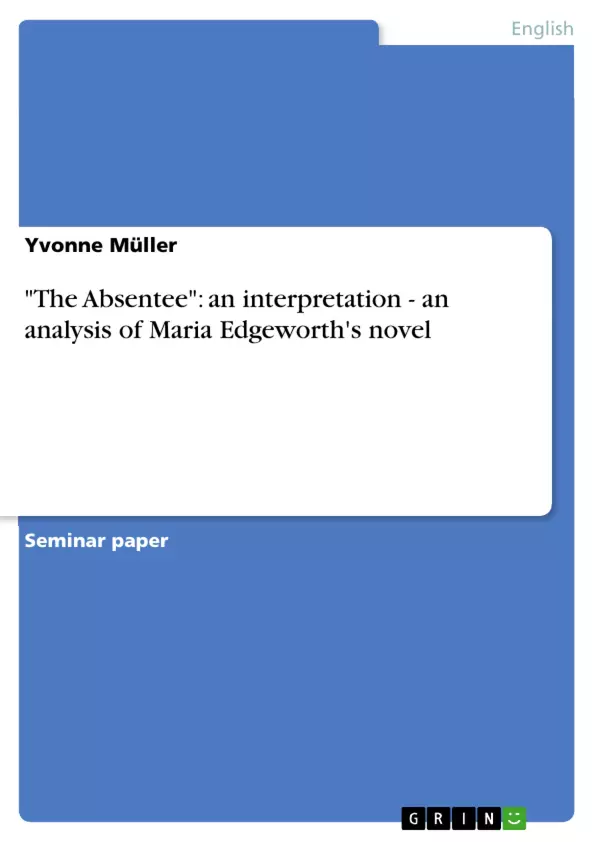The following term paper deals with Maria Edgeworth’s novel The Absentee. Written in 1812, it is the author’s third book about Irish life. As all three novels it refers to her own life, this paper begins with a short biography, which reveals this connection. The next section of the paper is about Ireland in the nineteenth century, the setting of The Absentee, which clarifies the historical background. In the following section the novel is summarized briefly. After that, the classification of the novel, gives the reasons, why it is considered a regional novel. One aspect of Irish regional novels is treated in more detail in the chapter that follows: the language of The Absentee. After these chapters, which analyze the novel, it is interpreted. Three different approaches of interpretation are used; the novel as a love story, the novel as a regional novel and the educational aspects in it.
Table of Contents
- Introduction
- The Absentee
- Maria Edgeworth
- Ireland in the Nineteenth Century
- Summary
- Classification of the Novel
- Language in the Novel
- Approaches of Interpretation
- The Novel as a Love Story
- The Novel as a Regional Novel
- Educational Purpose of the Novel
- Absenteeism
- Prejudices
- Individualism
- Intention of 'The Absentee'
- Critique
- Conclusion
Objectives and Key Themes
This term paper aims to analyze Maria Edgeworth's novel The Absentee, focusing on its historical context, literary classification, and the author's intention. The paper explores the novel's depiction of Irish society in the early 19th century, particularly addressing the themes of absentee landlords, social prejudices, and the importance of individual responsibility.
- The Impact of Absentee Landlords on Irish Society
- Social Prejudices and Their Influence on Relationships
- The Role of Education and Moral Development in Shaping Individuals
- The Importance of Unity and Commitment to Ireland
- The Development of a Sense of National Identity
Chapter Summaries
The introduction provides an overview of the paper's structure and scope, highlighting its focus on The Absentee and its historical and literary context. It outlines the key themes and sections that will be discussed in detail.
The chapter on "The Absentee" begins with a brief biography of Maria Edgeworth, revealing her connection to the Irish setting and themes explored in the novel. It then delves into the historical context of Ireland in the 19th century, specifically highlighting the Act of Union and the impact of the Penal laws on Irish society.
The summary of the novel provides a brief overview of the plot and key characters, focusing on the Clonbrony family's struggles with absenteeism and their attempts to navigate London's high society. It also introduces Lord Colambre's journey to Ireland and his encounters with various social groups.
The chapter on "Approaches of Interpretation" explores different perspectives on the novel. It analyzes The Absentee as a love story, as a regional novel, and examines the novel's educational purpose, particularly highlighting Edgeworth's opinions on absenteeism, prejudices, and individualism.
Keywords
Key themes and concepts explored in the paper include Maria Edgeworth, The Absentee, Irish society, absentee landlords, social prejudices, education, moral development, unity, national identity, and regional novel.
- Quote paper
- Yvonne Müller (Author), 2008, "The Absentee": an interpretation - an analysis of Maria Edgeworth's novel, Munich, GRIN Verlag, https://www.grin.com/document/88277



